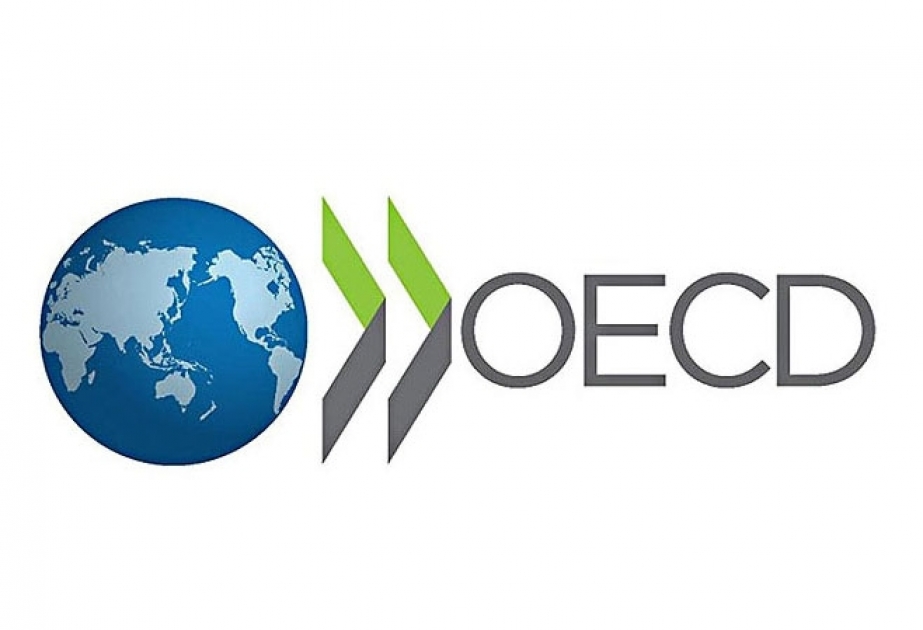
The introduction of a modern transportation system has revolutionized the way residents navigate the urban landscape. Offering a seamless and efficient means of travel, this advancement plays a pivotal role in reducing congestion and promoting sustainability within metropolitan areas.
With a design focused on accessibility and convenience, the system has quickly gained popularity among commuters. Each day, thousands of individuals rely on this advanced solution to connect them to key destinations, enhancing their daily routines and improving overall quality of life.
As cities continue to grow, such initiatives become essential in addressing the challenges of urban travel. The integration of this transport method not only optimizes transit options but also demonstrates a commitment to creating greener, more livable environments for all.
Overview of the New LRT Launch
This section presents a comprehensive insight into the recent introduction of the innovative transportation system designed to enhance urban mobility. The initiative aims to alleviate congestion and provide a reliable mode of transit for the community.
Key Features of the Transportation System
-
Efficient travel routes that connect major city centers.
-
State-of-the-art vehicles equipped with modern amenities.
-
Real-time tracking for improved schedule reliability.
-
Accessibility options for individuals with disabilities.
-
Eco-friendly technology that promotes sustainable commuting.
Impact on the Community
The implementation of this transportation solution has yielded numerous benefits for the urban populace:
-
Reduction in road traffic, resulting in shorter travel times.
-
Heightened public engagement and satisfaction with local transit services.
-
Boost to local businesses due to increased foot traffic.
-
Promotion of healthier lifestyles through easier access to public spaces.
-
Contribution to environmental conservation by lowering carbon emissions.
Benefits for Daily Commuters
The introduction of a modern transit system has significantly improved the commuting experience for individuals traveling to and from work or other daily activities. With enhanced efficiency and convenience, this service addresses many of the challenges faced by urban dwellers when navigating the city.
Convenience and Accessibility
This innovative mode of transport provides easy access to various neighborhoods and commercial areas, making it a preferred choice for commuters. Its frequent schedules minimize wait times, allowing travelers to plan their journeys with confidence and flexibility.
Cost-Effectiveness and Environmental Impact
Utilizing this service can lead to substantial savings on transportation costs compared to private vehicle ownership. Additionally, it helps reduce traffic congestion and lowers greenhouse gas emissions, contributing positively to the urban environment.
|
Benefits |
Description |
|---|---|
|
Improved Reliability |
Regular scheduling ensures timely arrivals and departures. |
|
Reduced Commuting Stress |
Less time spent in traffic results in a more relaxed commuting experience. |
|
Enhanced Safety |
Modern vehicles and well-maintained infrastructure increase passenger safety. |
|
Social Interaction |
Commuters have the opportunity to connect with their community. |
Impact on Local Transportation Network
The introduction of an innovative transit solution has substantially transformed the local transportation framework. This advancement has enhanced connectivity, reduced congestion, and offered commuters a reliable alternative to traditional modes of travel. The ripple effect is evident as the infrastructure evolves to accommodate the growing demand for efficient commuting options.
Improved Connectivity
As this new transit system integrates with existing routes, it fosters seamless transitions among various forms of transportation. Commuters now have better access to key destinations, resulting in shorter travel times and increased convenience. Strategic planning has ensured that transfer points are well-positioned, allowing for fluid movement between different transport modalities.
Reduction in Traffic Congestion
The enhanced service has significantly alleviated traffic bottlenecks, especially during peak hours. By providing an efficient alternative for short to medium-distance trips, the number of personal vehicles on the road has decreased. This has not only improved air quality but has also led to a more pleasant urban environment, benefiting both residents and visitors alike.
Environmental Considerations of LRT System
Implementing efficient public transportation systems can significantly reduce the environmental footprint of urban areas. By encouraging a shift from personal vehicles to mass transit, cities can lower greenhouse gas emissions, decrease air pollution, and alleviate traffic congestion. This section explores the ecological benefits associated with modern rail transit solutions.
Reduction of Carbon Emissions
One of the primary advantages of rail transport is its capacity to minimize carbon emissions. By utilizing electric trains powered by renewable energy sources, cities can dramatically cut the amount of carbon dioxide released into the atmosphere. Furthermore, greater ridership on rail systems reduces the number of fossil fuel-powered cars on the road, leading to lower overall emissions.
Preservation of Urban Spaces
In addition to reducing pollution levels, rail systems contribute to the preservation of green spaces in metropolitan areas. Well-planned routes can be integrated into existing urban landscapes, ensuring that vital natural areas remain untouched. This not only helps maintain biodiversity but also provides residents with recreational spaces, improving overall quality of life.
Technological Innovations in LRT Design
The evolution of urban transportation systems reflects a commitment to integrating modern technologies that enhance efficiency, safety, and user experience. Recent advancements have redefined how these systems operate, ensuring that they adapt to the ever-changing demands of urban mobility. Innovations in design not only streamline the operational aspects but also contribute significantly to sustainability and energy efficiency.
Smart Systems Integration
Contemporary transit solutions incorporate intelligent systems that optimize route planning and improve real-time communication with commuters. Predictive algorithms analyze historical travel patterns to minimize delays, while automatic train operation enhances schedule adherence. This seamless integration results in a highly responsive network that caters to the needs of its users.
Eco-Friendly Solutions
Another key innovation includes the utilization of sustainable materials and energy-efficient technologies. Systems now feature regenerative braking mechanisms which convert kinetic energy back into electrical energy, thus reducing overall energy consumption. Additionally, the incorporation of solar panels on transit infrastructures not only generates renewable energy but also contributes to a smaller carbon footprint, promoting an environmentally-friendly urban atmosphere.
Future Expansion Plans for the System
The vision for the system’s growth encompasses an array of enhancements aimed at improving connectivity and accessibility. With a focus on integrating new routes and increasing capacity, the future endeavors promise to build a seamless transportation experience for users throughout the region.
Proposed Extensions
Among the key proposals for future development, various extensions are being considered. These expansions aim to cover underserved areas and link major hubs more effectively.
-
New routes connecting suburban neighborhoods to central districts.
-
Enhanced service frequency during peak hours to accommodate more travelers.
-
Plans for additional stations to facilitate ease of access.
Investment in Infrastructure
To support the anticipated growth, significant investments in infrastructure will be critical. Key initiatives include:
-
Upgrading existing tracks to handle higher volumes and speeds.
-
Implementing advanced technology for real-time tracking and safety management.
-
Developing environmentally friendly practices to promote sustainability.
With these future strategies, the system aims to not only elevate the level of service offered but also to contribute positively to the overall urban landscape, ensuring that it meets the demands of an ever-growing population.
Q&A: Newlylaunched lrt carries over 30000 passengers daily
What are the main features of the newly launched LRT system?
The newly launched Light Rail Transit (LRT) system boasts several key features designed to improve urban transportation. One of its most significant aspects is its capacity to transport over 30,000 passengers daily, easing congestion in busy urban areas. The LRT has modern, eco-friendly trains that utilize energy-efficient technology, reducing its carbon footprint. Additionally, the design includes dedicated tracks that ensure fast and reliable service, minimal delays, and accessibility options for individuals with disabilities. Stations are equipped with real-time information displays, making it easy for passengers to stay informed about arrival and departure times.
How has the introduction of the LRT impacted daily commuters?
The introduction of the LRT has had a profoundly positive impact on daily commuters. By providing an efficient and reliable mode of transportation, the LRT reduces travel times compared to traditional bus services. Commuters report easier transfers between the LRT and other transport systems, facilitating smoother overall travel experiences. The LRT has also alleviated street congestion, contributing to a more pleasant and less stressful commute. Many commuters appreciate the fixed schedule and frequency of the LRT, empowering them to better plan their daily routines.
What measures are in place for safety and security on the LRT?
The safety and security of passengers on the new LRT system are paramount. Several measures have been implemented to ensure a secure environment. Stations and trains are equipped with surveillance cameras to deter crime and ensure quick responses to any incidents. Trained security personnel patrol the system regularly, providing assistance and monitoring passenger safety. Emergency procedures are clearly communicated and staff are trained to handle various situations, from medical emergencies to mechanical failures. Additionally, the LRT incorporates design features such as well-lit stations and visible emergency exit signs to enhance safety.
Are there any plans to expand the LRT system in the future?
Yes, there are plans for future expansion of the LRT system to accommodate growing passenger demand and further improve urban transportation. City planners are currently evaluating proposals for additional routes that would connect underserved neighborhoods, increase accessibility, and provide a more comprehensive public transport network. Future expansions may also include enhanced services, such as additional train cars for peak hours and extended operating schedules. Community feedback is being collected to ensure that the expansion aligns with the needs and preferences of local residents.
How can passengers provide feedback or report issues related to the LRT service?
Passengers have several options for providing feedback or reporting issues related to the LRT service. The LRT system has established a user-friendly online platform where passengers can submit comments, suggestions, or complaints directly. Additionally, feedback kiosks are available at major stations for on-the-spot reporting. Customers can also contact a dedicated helpline for immediate assistance, ensuring that concerns are addressed promptly. Regular surveys are conducted to gather insights from passengers, allowing the LRT management to continuously improve service quality based on user experiences.
What impact has the newly launched LRT had on daily commuting in the city?
The newly launched Light Rail Transit (LRT) system has significantly transformed daily commuting patterns in the city. With an impressive capacity to transport over 30,000 passengers daily, it has alleviated congestion on the roads, reducing travel time for commuters. Many residents have reported that they now have a more reliable and efficient means of transportation, which has encouraged a shift away from private vehicles to public transit. Consequently, the LRT not only improves the movement of people but also contributes to a decrease in vehicle emissions, promoting a more sustainable urban environment. This shift is expected to foster economic growth as easier access to different parts of the city can enhance business opportunities and encourage retail activities in previously under-served areas.
Are there any plans for future expansions or improvements to the LRT system after its initial launch?
Yes, following the successful launch of the LRT, there are already plans for future expansions and improvements to the system. City officials have indicated that they are assessing various routes to extend the LRT network further into suburban areas, with the aim of increasing accessibility for more residents. Additionally, enhancements to the existing infrastructure, such as upgrading stations and increasing the frequency of trains, are also on the agenda. Feedback from passengers is being actively sought to identify areas for improvement, such as service reliability and comfort. These developments will not only improve passenger experience but also enable the system to accommodate a growing number of commuters as the city continues to expand. Ultimately, the goal is to establish a comprehensive public transit network that makes it easier for everyone to navigate the city efficiently.
How did the COVID-19 pandemic affect the progress of the LRT Jabodebek project in Indonesia?
The COVID-19 pandemic caused significant delays in the LRT Jabodebek project in Indonesia. Originally expected to be operational earlier, the project faced mechanical challenges and disruptions due to the pandemic. Despite these setbacks, the consortium involved, including state-owned companies like Adhi Karya, worked to continue the construction and semi-trial phase, with plans for the railway system to be fully operational by November 2023. The pandemic’s impact also influenced the number of passengers expected to use the system upon full operation.
What are the key features of the LRT Jabodebek rolling stock used in the Jakarta Light Rail Transit system?
The rolling stock used in the LRT Jabodebek for the Jakarta Light Rail Transit system is designed to be fully automated and driverless. These low-floor trains, developed as part of a joint venture and public-private partnership, are equipped with advanced signal and communication systems. Each train is designed to carry a large number of passengers per trip, ensuring efficient and rapid transit across the Jakarta metropolitan area and into West Java. The rolling stock adheres to modern safety and efficiency standards, making it a crucial component of the railway system in Indonesia.
How is the fare structure determined for the LRT Jabodebek, and what factors influence it?
The fare structure for the LRT Jabodebek is determined by various factors, including the cost of the project, the expected number of passengers, and the operational costs upon full operation. The Indonesian Ministry of Transportation, in consultation with the consortium involved in the project, set the fare to balance affordability for riders and the sustainability of the system. The fare is expected to be competitive, encouraging wide usage of the light rail system while covering the expenses associated with the 125-kilometer expansion project and maintenance of the rolling stock.
What are the mechanical challenges faced during the semi-trial phase of the LRT Jabodebek project?
During the semi-trial phase of the LRT Jabodebek project, several mechanical challenges were encountered, including issues with the signal systems and the integration of fully automated, driverless technology. These challenges were addressed by the consortium and involved state-owned companies such as Adhi Karya, working closely with international partners like Alstom. The mechanical challenges, although significant, were resolved to ensure the safety and reliability of the railway system upon full operation. This phase was crucial to fine-tuning the system before it became fully operational in November 2023.
How does the LRT Jabodebek project compare to other Southeast Asian rapid transit systems?
The LRT Jabodebek project is a significant advancement in Indonesia’s public transportation infrastructure, placing it on par with other rapid transit systems in Southeast Asia. Unlike traditional railways, the LRT Jabodebek features a fully automated and driverless operation, similar to modern systems in cities like Singapore and Kuala Lumpur. With a focus on sustainability, the LRT Jabodebek aims to reduce traffic congestion in the Indonesian capital and surrounding areas. The project’s success could set a precedent for future expansions and public-private partnership initiatives in the region, similar to those seen in other Southeast Asian countries.






